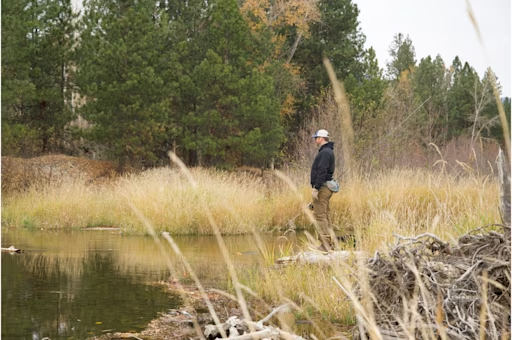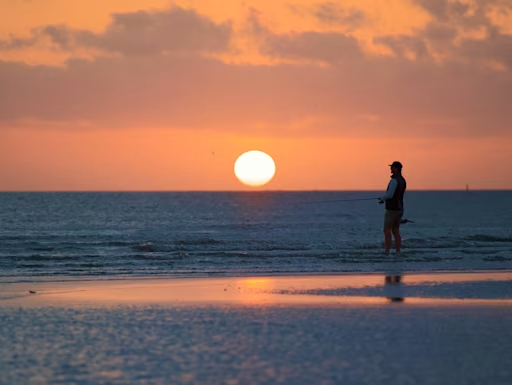Species profile: Getting to know red drum
Get to know one of the most popular salt water species to catch: The Red Drum. This species can be found from Virginia to Texas and offers one of the best pound for pound fights of any fish species.
Share this article

This is an ongoing series from the Fishbrain App, where we highlight specific species and interview our Pro Staff who specialize in chasing them.
The Fish: Red Drum
Pro Staff: Chasten Whitfield
Also Known As: Redfish, Channel Bass, Spottail Bass
Found: Coastal and Brackish (mix of salt and fresh) water from Virginia to Texas
Family: Sciaenidae
Average size: 10-30 pounds
Record Size: 60 inches, 94 pounds

Red Drum are one of the most popular and easily found saltwater species in the U.S. Reds are easily identifiable by the black spot found on every individual's tail. Biologists theorize these spots are used to confuse predators by imitating an eye, thus luring larger fish to attack the tail instead of the actual head.
Because of the diverse coastlines reds inhabit, anglers use an equal amount of diverse methods to catch them. Redfish are generalists when it comes to eating and they consume everything from crabs and shrimp to mullet. Casting at “tailing” reds is by far the most exciting method for catching these fish. When “tailing”, reds will be found in shallow water with tails in the air as they root through mud and sand for shellfish and other food. Everything from live bait, to fly patterns are used to catch these terrific fighters.
Fishbrain App pro staffer Chasten Whitfield has made a name for herself fishing the west coast of Florida. Whether it's from a dock, inshore, or offshore on a boat she absolutely loves catching these fantastic fighting fish.

Gulf Coast Redfish
CW: I like how they fight. They are very strong fish and when you hook one you know you have a red based on how they fight. They fight more with their head, where a snook will take off and run. Red fish will give good head shakes.
Where Do You Fish for Redfish
CW: Underneath docs during winter especially. Right now in midsummer you can find them on a high tide underneath a mangrove looking for bait.
Low tide they look for small potholes in the sand and grass. Same thing, looking for bait and waiting for the high tide
Targeting Tailing Reds
CW: When they tail, their head is down and they are eating shellfish or bait fish. This is always in shallow water and you will only see a couple inches of their tail so you need to pay attention. See it a lot in the Everglades area because of the water depth and grass.
What do Redfish Eat
CW: Greenbacks, crab, blue crab. You can tell if they are eating blue crab because the last few centimeters of their tail will turn blue. They will eat shrimp and mullet, as well. They eat pretty much anything.
Favorite baits
CW: Live greenbacks thrown under mangrove overhangs are my favorite. The water is so clear you can see your bait swim out from under the mangrove and watch the redfish chase it.
It's like watching National Geographic happen right in front of you.
I’m more of a live bait kinda girl but, I have caught reds on gold spoons and berkeley shrimp.
I once even took a blue crab, cut it in half, through it under a doc and and caught a 35 inch red.

Challenges of redfishing
CW: When you are fishing mangroves you tend to get caught up a lot. You always try and fish right where the mangrove meets the water and I always end up in the bush like I'm fishing for birds.
Also if a big red takes your bait where the mangrove meets the water they will take you directly into the roots and bushes to tie up your line and break you off. Reds are strong fish and it can take a lot to pull a one’s head and move them out of any brush, or roots.
Rod/reel/line set up
CW: Fishing inshore, I use a Battalion seven foot fast action, with a Penn Clash spin reel, 12-15 pound braided line with 20 pound leader and 2/0 circle hook.
What’s your favorite time of year for redfish and why
CW: August, the end of summer and beginning of fall when the weather cools down. I also enjoy winter when they get under docks, because here in winter you can use live shrimp with a pinch weight.
What's your biggest?
CW: The fish I caught off the half a blue crab is still my biggest. I caught that one during a tournament so it was perfect timing. We had just watched a YouTube video where someone used a blue crab to catch a red.
I cut a blue crab in half and tossed it under the doc. 45 seconds later it felt like someone dropped a cinder block on the end of my line. My fishing team was all girls and it was the first fish we had caught all day. My whole team was screaming to not lose the fish. One of my teammates was so excited she peed herself in all the excitement. We ended up taking 3rd in the JRs division and 1st in the ladies division.
Make sure and check out all of Chaston’s redfish catches by checking out her profile on the FIshbrain App!

Download the Fishbrain app and access the best fishing spots in your area
Related blog posts
Your guide to Victoria’s best fish to catch in rivers, lakes, and coastal waters. Learn prime species, fishing tips, and key regulations

Learn how fish adapt as water temperatures cool from autumn to winter, including changes in behavior, metabolism, and habitat that help them survive.

From the beaches of Florida to the Great Lakes tributaries in Pennsylvania, learn how fish adapt to fall weather and how you can capitalize on that change.




